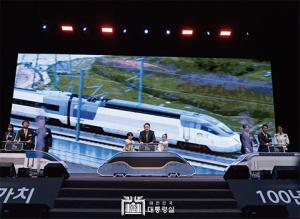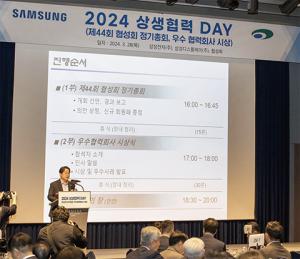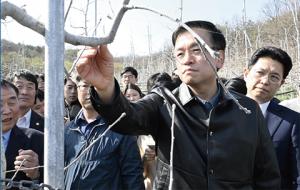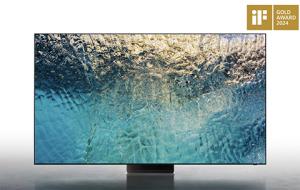 |
||
〔한국화 이순란 화백〕
“동양화와 서양화의 통섭을 꿈꾸다!”
한국 현대문인화 대표작가 ‘연용 이순란 화백’
“나는 현대 미술사조와 시대성 등을 읽어가면서 서체와 사군자만 답습했던 문인화 작업에서 탈피하고자 나름의 부단한 연구를 했고, 주변의 작가들과도 예술적 교감을 이루기 위해 많은 노력을 기울여 왔다. 그리고 지금은 가까운 서양화가들이 ‘먹’을 자유롭게 구사하는 나를 부럽다고들 말한다. 난 문인화와 서예가 현대 문인화로 불리든, 서양화로 불리든 개의치 않고 오랜 시간 수학한 토양의 토대 위에서 서양의 멋을 입혀 멋드러진 붓질을 계속해 갈 것이다.”< 작가 노트 중에서 >
문인화는 조선시대의 선비나 사대부들이 여흥으로 자신들의 심중을 표현해 그린 그림으로 불렸다. 동양에만 존재하는 독특한 장르로 그림 속에 사물의 모습을 구체적으로 표현하지 않고 마음속의 사상을 표현하는 사의(寫意)에 치중하는 경향이 강했다. 이렇듯 문인화는 뚜렷한 명분과 당위성을 가지고 민족 미술의 근간을 이루며 한국의 대표 장르로 자림 매김 해왔다.
그럼에도 불구하고 현대에 이르러서는 서예나 동양화를 이수하는 기초 과정이나 종속 개념으로 치부되고 평가절하 되는 등 많은 수난을 겪기도 했었다. 이 때문에 이를 타파하기 위해 문인화 작가들은 새로운 개념 설정과 현대화에 기수적 역할을 하며 많은 노력들을 쏟아 온 것으로 알려진다.
그 중에서 자생적으로 생겨난 엘리트 작가 군들이 좋은 예로 이들은 기존의 모화(慕華) 양식에 길들어진 속박에서 벗어나 현대화와 더불어 ‘절대 미학, 절대 자유’ 등을 기치로 선두 역할을 해가고 있다. 즉, 고매하고 품격 높은 조선시대 선배 문인화가들의 정신을 따르면서도 표현에서의 분방한 미학을 구가해 가고 있으며, 추구하는 문인화의 새로운 예술 양식은 이제는 선진국 등 해외 전시에서도 높은 평가를 받고 있다.
서양회화에 동양사상 깃든 필법을 섞다.
“유년기에 시골 청도의 풍광은 들판에 널린 논과 밭, 주변에 피어있는 들꽃, 산(山)과 강(川)의 일상적인 모습들로 늘 뇌리에 맴돌았어요. 이런 기억들이 전(田)의 이어쓰기와 연결되었고, 신체 행위의 흔적으로 표출될 때 전자유희(田字遊戱)적 흔적과 전원 풍경들을 시간의 흐름과 상상력의 흔적 등으로 화면에 압축해 표현하게 된 것이지요”
한문의 ‘전(田)’자를 몰아지경 지속적으로 흐르며 소멸해 감과 더불어 자연의 추상기법 등을 접맥해 표현하는 연용(姸蓉) 이순란 화백. 화력 40년을 넘긴 그는 한국 대표 작가로 이름 올리며 문인화에 새로운 개념을 불어 넣어 현대화를 이룬 중추 인물이다. 그의 필묵의 세계를 한마디로 표현하면 ‘서예와 문인화의 변용이자 변주’로 특히, 묵법(墨法)을 넘어 무법(無法)으로 그려지는 문기의 작품들은 문자 조형의 서예에 뿌리를 둔 회화적 요소를 두루 갖춘 것으로 정평이 나있다.
이 화백은 유년기와 청소년기를 거치면서 붓글씨와 그림 그리기를 즐겼으며 대학에서 서양화를 전공하고 대학원에서 문인화(석사 과정)와 판화(박사 과정)를 전공하는 등 독특한 이력을 갖는다. 다양한 장르의 수학으로 일찌기 문인화의 현대적 표현에 대한 관심을 가졌으며, 현대 미술에의 확장성을 위한 꾸준한 실험과 작업에 많은 시간을 보냈다.
이 화백은 자신의 작품 관에 대해 “문인화와 서양화는 이질적인 재료와 그에 담긴 각각의 예술사상 내지는 예술의 구성에 다소 격리와 분리의 입장을 취하지만, 각각의 부족함을 조율과 융합으로 상호 보완하여 통합이라는 새로운 조형성을 구축하고자 문인화적인 내면세계를 강조하며 접근하였다.”고 밝혔다.
그동안 그는 꾸준한 작업을 통해 “서체의 움직임을 통해 현대 문인화로의 진보가 진행됨을 인지하였고, 현대 미술로서의 상호성과 융화, 융섭의 호응 관계도 문인화의 정신 구조에 초점을 맞추어 묵법적 필선에서 그 가능성의 단초를 찾았다” 면서 “필법의 요소가 문인화의 현대적 표현에의 주안점이 될 수 있음에 접근함으로써, 필선이 현대성을 폭넓게 확대할 필요 요건임도 인지하게 되었다”고 설명했다.
이어서 그는 “그 결과 작업에 적용하며 서체적 필법이 현대성을 어떻게 발휘하고 조율할 수 있는지를 알게 되었다. 즉, 현대미술과 문인화의 호응관계를 도출하겠다는 과제를 안고 작업의 실재에서 통섭과 통합을 꿈꾸며 붓을 매개로 필법이라는 기능과 역할 등을 부여함으로써, 화면에 부유하는 서체적 필선들이 신체적 행위의 흔적으로 조합되고 융합되는 등 화면에 유희적 흔적으로 자연스럽게 용해되었다.”고 덧붙였다.
문자조형 필묵 연구 ‘작품과 논문’ 화제.
“초등학교 시절 미술수업과 습자수업(서예)이 재미있었고 ‘여자 한석봉’ 이라는 주위의 칭찬을 들으며 더욱 즐겁게 쓰고 그렸던 것이 화가의 길로 들어선 계기가 되지 않았나 싶어요. 서예는 청소년 시절엔 관두었다가 대학 시절 제 2의 신사임당이 되라는 친정아버지의 권유로 다시 체계적인 수학을 하게 된 것이 제 작업의 근원인 필력이 됐고, 회화성의 이행으로 연결되어 있으니 지금 생각하면 너무 고마운 생각이 들죠.”
이 화백은 대학 시절 서양화 그림에만 만족할 수 없었다. 서양화를 넘어 서예, 문인화, 판화 등 여러 면에 관심을 갖는 그를 지켜본 교수는 무척 못마땅해 했다고 한다. 대학과 대학원을 졸업한 후 작품을 이어갈 때는 ‘이단아’ 로 불린 적도 있었다. 하지만 그는 그 뜻을 “잘하고 있다는 뜻”으로 여겨 더욱 열심히 노력하며 스스로 남들이 가지 않은 길을 택해 걸었던 것이다.
이 화백은 “체계적으로 습득한 묵법과 화법이 교과서적 습작 과정으로 오래 진행되다 보니 어느 날 갑자기 무법이라는 차원과 문기가 투영된, 문인화적인 작업이어야 함을 인지하고 이후부터 많은 노력을 하며 작업 해왔다” 며 회상했다. 그리고 세월이 흘러 그 때의 은사님은 오히려 전시 때마다 찾아 응원하며 작품의 멘토가 되어 주신다고 한다. 뒤에 손병철 미술평론가도 그를 지목하며 “회화를 전공한 작가가 서예인이자 문인화가로 변신하면서 필연적으로 겪게 되는 정신적 고민은 물론 이질적인 재료의 사용에 따른 새로운 실험적 방법들과 다양한 표현으로 확대되어 가지 않을 수 없었을 것이다” 며 긍정적인 평가를 했다.
조선시대 ‘강세황’ 이나 중국의 ‘리커란’ 등이 연구한 것처럼, 이 화백 역시 현대화에 맞게 꾀하면서 작품을 연구하며 학문적으로 정리한 논문(계명대 미술교육학 석사 논문 - ‘한국 문인화의 전통성과 현대의 양상’), (동아대학원 미술학 박사 논문 - ‘문인화에 있어서 현대성으로서의 필법 연구’)을 내놓은 것도 이 같은 노력에서 비롯되어진 것이다.
세밀한 철학 담아서 왕성한 작품 활동.
지금에 이르러 이 화백을 마주하는 주변의 서양화가들은 모두가 부러워한다. 문인의 본질인 ‘먹’ 을 누구보다 자유롭게 사용하는 흔치 않는 작가이기 때문이다. 누구도 풀지 못했던 오랜 시간들을 정신력으로 견디며 화단에 커다란 영향을 끼쳤다. 이 화백은 20여 년간 대학에서 강의를 해 왔는데 최근에 은퇴 하면서 어느 때보다 작업 시간을 많이 갖게 되었다. 그는 “그동안 시간에 쫒겨서 하고 싶던 작품을 못하다 이제야 비로소 내 시간도 가지며 작품에 임하게 되어 마음은 한결 편하다”고 말했다.
그는 오는 9월로 예정된 19번째 개인전을 준비하고 있다. 30도가 넘는 무더운 여름의 작업실이지만, 흘리는 열정의 땀방울은 그 어떤 것과 맞바꿀 수가 없어 보였다. 이 화백은 이번 전시를 통해 “여태까지의 실험적 작업을 강조하되 좀 더 먹에 방점을 두어 서정성을 강조하고 싶고, 자연스런 자연을 간결하고 핵심적 요체로 승화된 추상적 풍광으로 화면에 담고 싶다”고 내 비쳤다.
“현재 작업들은 석판화 기법을 도입하여 좀 더 거친 질감을 위해 먹과 아크릴 필선들을 교차하여 중첩시키고 대비하여 필선의 경중과 운필의 변화로 소멸되어 가는 과정을 읽고자 했습니다. 이때 무의식적으로 무법적 필선으로 표출되어지고, 탈의미적인 붓질로 전통의 잔영은 자연히 퇴색되는 현대적 심상의 표현 이미지 입니다.”
이 화백은 “이는 자신의 전작을 차용하고 변용하되 거침없는 붓질로 화면에 부유하는 필선의 묘미를 살려 밀도감 있는 화면을 구축하여 회화성을 강조한 현대적 혼성을 표현한 작업이다.”는 설명도 겯들였다. 오랜 시간 자신만의 길을 꿋꿋이 걸었던 작가의 모습이 시나브로 다가오면서 커다랗게 느껴지는 건 왜 일까? 갤러리에 새롭게 얼굴을 드러낼 이 화백의 작품들을 바라보는 수많은 시선들을 상상해 보며 사뭇 기대를 부풀게 만든다.
< 연용<姸蓉> 이순란(李順蘭) 화백>
* 동아대학원 미술학 박사 졸업
* 계명대학원 교육학 석사 졸업
* 신라대 미술학과 졸업
* 개인전 18회(부산8회, 서울6회, 미국2회, 프랑스, 일본)
* 그룹전 400여 회
* 대학강의 20년(신라대, 울산대, 동아대, 부산예술대)
* 한국미술대전 및 주요 지방미술대전 15여 회 심사위원 역임
* 부산미술대전 서예, 문인화 부문 대상 수상(1994년)
 |
‘When Korean painting meets with western painting’
Korea’s representative literary painting artist Lee Sun-lan
“I have tried to think about new ways for traditional literary painting through active exchange with my fellow artists. Some of them envied me for using ink freely but it does not matter whether my works are named as literary painting or western painting as I am determined to keep my brush modern based on tradition” – Artist’s note –
Literary painting was originally enjoyed by noblemen as hobby during the Joseon Dynasty period. But they tend to express things in their mind rather than objects on the Korean paper.
Literary painting today, however, was often treated as a subordinate form of art and many related painters have exerted their effort in spreading the true values of the genre.
Some of the painters among them are leading the genre with their philosophy ‘absolute estheticism and absolute freedom from the tradition’. This does not mean, however, to forsake the traditional value of the genre but applying it in modern terms.
Korean painting meets with western painting
“I was born in Cheongdo County and grew up by seeing the fields and the wild flowers around the rivers and the mountains. They were the source of my inspiration” remembers Lee.
40 years of her career as an artist in literary painting brought her the title ‘Korea’s representative literary painting artist who blew a new concept of literary painting into modern terms’. Her works also are often quoted by critics as ‘transformation or variation of calligraphy and traditional literary painting.’
Lee found a great pleasure in calligraphy and drawing since she was a child. She majored in western painting, turned her course to literary painting in graduate school and turned her eye to print in PhD. She showed a great interest in modernization of literary painting and tried to expand the scope to modernity.
“Korean and western paintings are different in styles, materials and meanings. Nevertheless, I tried to fill up the differences in balance in order to create a new form and style.”
“Through this convergence process, I came to better understand how my brush could work in modern terms. In other words, I could be able to create a certain bodily pleasure of moving my hands through new stokes and styles”
Publishing papers
“I was often called as ‘a woman Han Seok-bong’, a leading mid-Joseon period calligrapher when I was a child. Then I was asked to be the second Shin Saimdang, a Korean artist, writer, calligraphist and poet, from my father when I was in my teens.”
Apart from calligraphy and literary painting, Lee also showed a great interest in western painting and print. And this often caused dislike from her professor. She was even called as a maverick but she took it as a compliment and carried on her own way.
An art critic Sohn Byeong-chul once said “Lee is a western painting major turned calligrapher and literary painting artist. But this psychological transformation rather played a great role to enable her to create experimental works with different materials.”
Lee’s talent in art is not only expressed in her paintings but her papers also: ‘A Phase of Tradition and Modernity of Korean Literary Painting (master’s paper)’ and ‘A Research on Brushwork in Modern Terms of Literary Painting (PhD)’.
Preparing for new exhibitions
Many western painting artists envy Lee for her technique of using the ink. They admit that only a few painters can actually use the ink freely like Lee and the influence she has brought to the artistic world is great. “I have taught students at various universities for the last 20 years. Retired now, I will focus on my own works.”
Lee currently is preparing for her 19th solo exhibition to be held in September this year. “This time, I will give more emphasis on the ink and lyricism as well as abstract interpretation of landscape.”
“Of course there will be many elements shown in my previous works but the brushwork will be bolder and the intensity and modernity strengthened.”
If you are thinking of visiting a gallery this early autumn, you are highly advised to do so at Lee’s 19th solo exhibition. <Power Korea> also is looking forward to seeing Lee in September.
Profile
PhD in Art, Dong-A University
MA in Education, Keimyung University
BA in Art, Silla University
18 solo exhibitions (8 in Busan, 6 Seoul, 2 US, and also France and Japan)
400 group exhibitions
Giving lectures on art for 20 years at Silla, Ulsan, Dong-A universities and Busan Arts College)
Member of judging panel for 15 times for various art competitions including The Grand Art Exhibition of Korea
Winning The Grand Art Exhibition of Busan in the calligraphy and literary painting category
홍기인 기자 forum1004@naver.com







